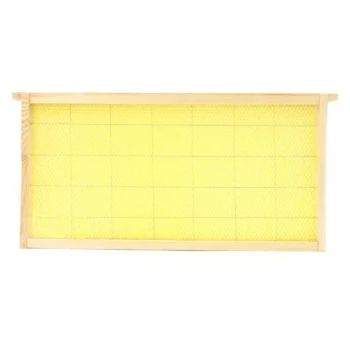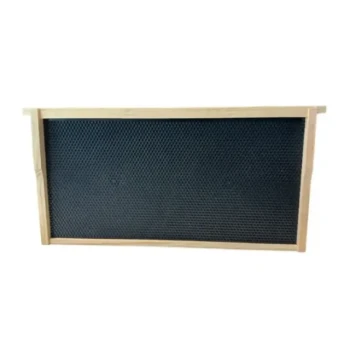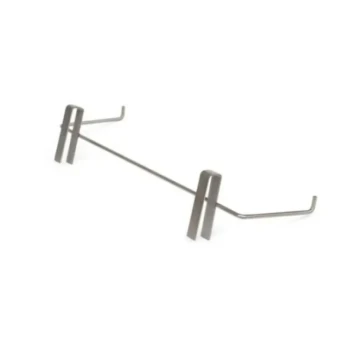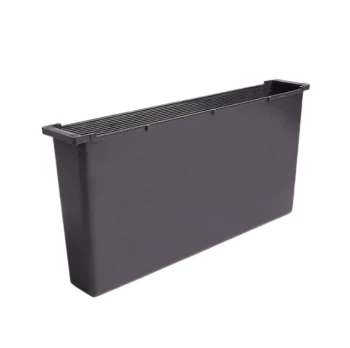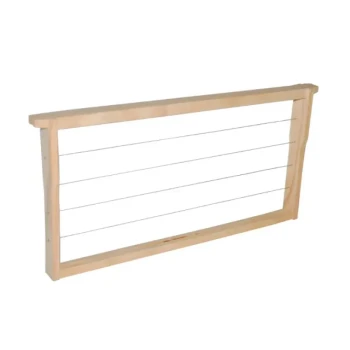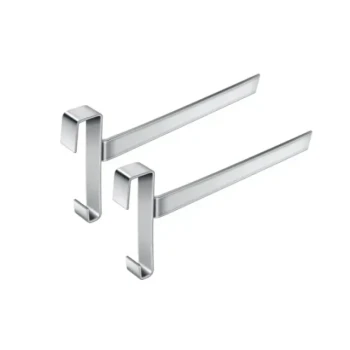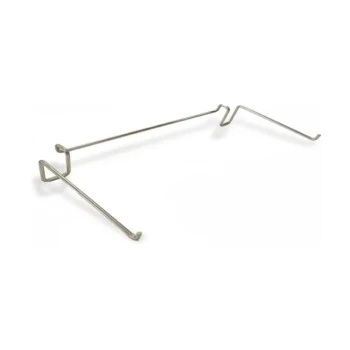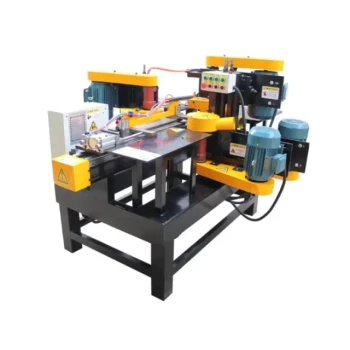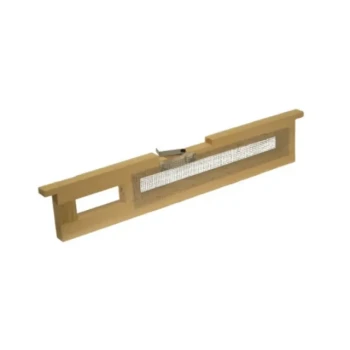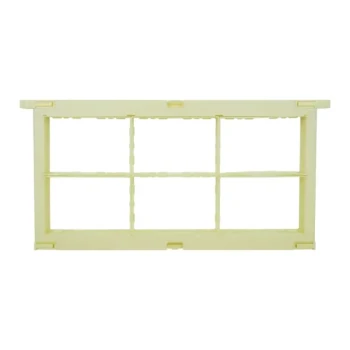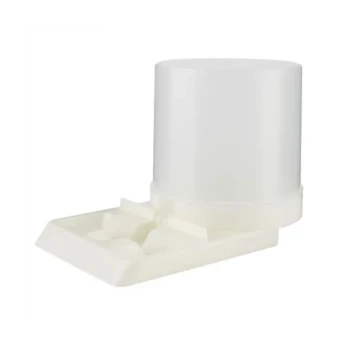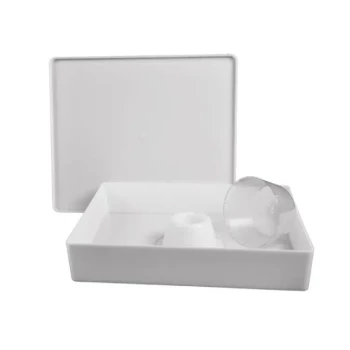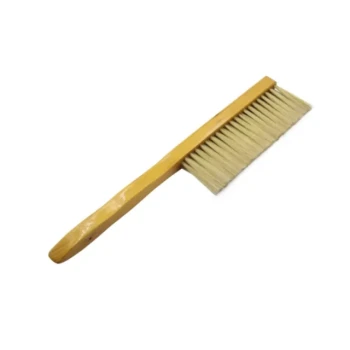A good bee frame is defined by two key aspects: its physical construction and, more importantly, the contents the bees have built upon it. Physically, it should be made of durable materials that resist warping. In use, a healthy frame serves as a clear indicator of colony health, showcasing a well-organized pattern of brood, pollen, and honey with available space for the colony to expand.
The appearance of a bee frame is less about the object itself and more about what it tells you. It is a direct snapshot into the health, productivity, and future potential of your honey bee colony.

Assessing the Frame's Contents: The Brood Nest
A frame from the center of the hive's brood nest is a powerful diagnostic tool. The pattern of its contents reveals the queen's health and the colony's overall organization.
The Ideal Brood Pattern
A productive queen lays eggs in a tight, consolidated pattern. A good frame will have a solid area of capped brood (pupating bees) with very few empty cells, often looking like a well-packed cobblestone street.
This dense pattern indicates a healthy, fertile queen who is methodically filling the available space.
The "Rainbow" of Resources
The most efficient hives organize their resources in a distinct arc around the brood. Directly surrounding the developing bees, you should see a colorful band of packed pollen, which serves as protein for feeding the larvae.
Above and to the sides of the pollen, you will find an arc of capped honey and open cells of nectar. This "pantry" arrangement saves nurse bees time and energy, as their food source is immediately adjacent to the brood they are tending.
The Importance of Empty Cells
A healthy, growing colony always needs room to expand. On the edges of the brood nest and the food stores, you should see empty, polished cells.
These empty cells are not a sign of inactivity. They are intentionally prepared and cleaned by worker bees, signaling that the queen has space to lay more eggs and the colony has room to store incoming nectar.
Evaluating the Frame's Physical Construction
While the contents are paramount, the physical frame provides the literal foundation for the colony's success.
Material Quality and Durability
A good frame is constructed from high-quality wood or food-grade plastic that will not easily break or warp over time. Sturdy construction ensures the frame can support the weight of honey and bees and withstand the stress of hive inspections.
Poorly made frames can fall apart during manipulation, causing chaos in the hive and potentially killing bees or the queen.
Foundation and Comb Structure
Most beekeepers use frames with a sheet of foundation (wax or plastic) to guide the bees. This encourages them to build straight, even comb within the frame's boundaries.
A well-drawn frame has straight comb that does not bulge or connect to adjacent frames. This makes inspections possible without tearing comb and killing bees.
Understanding What a "Bad" Frame Reveals
Identifying problems on a frame is just as important as recognizing a good one. It allows you to intervene before a small issue becomes a major crisis.
A Spotty Brood Pattern
A frame with a "shotgun" or spotty brood pattern, where empty cells are scattered randomly among capped brood, is a significant red flag. This can indicate a failing or poorly-mated queen, or the presence of pests and diseases like Varroa mites or chalkbrood.
Lack of Food Stores
A frame packed with brood but with little to no surrounding pollen and honey is a sign of a colony at risk of starvation. The bees are raising a large population without the resources to feed them.
A "Honey-Bound" Frame
The opposite problem is a frame that is completely filled with honey, leaving no empty cells for the queen to lay eggs. This "honey-bound" condition can severely limit the colony's population growth and may trigger the hive to swarm.
How to Interpret What You See
Your observations during a hive inspection should guide your management decisions. Use the frame as your guide to determine what the colony needs next.
- If you see a compact brood pattern with a rainbow of resources: Your queen is performing well and the colony is healthy and organized; your primary job is to ensure they have adequate space.
- If you see a spotty or inconsistent brood pattern: You must investigate further for potential queen failure, disease, or pest pressure.
- If the frame is full of honey with no room for brood: The colony is likely "honey-bound" and you need to add more frames or another hive box (super) to provide laying space.
- If you see plenty of brood but almost no food stores: The colony may require supplemental feeding, especially if there is no external nectar flow.
Reading a frame correctly is the single most important skill for proactive and successful beekeeping.
Summary Table:
| Feature | What to Look For | Why It Matters |
|---|---|---|
| Brood Pattern | Tight, solid area of capped brood with few empty cells. | Indicates a healthy, productive queen. |
| Resource 'Rainbow' | Pollen band around brood, honey/nectar arc above/sides. | Shows efficient organization for feeding larvae. |
| Empty Cells | Polished, empty cells on the edges of the brood nest. | Provides space for the queen to lay and the colony to grow. |
| Comb Structure | Straight, even comb that doesn't bulge or connect to other frames. | Allows for easy inspections without damaging the hive. |
Ready to build a stronger, more productive apiary?
The quality of your beekeeping equipment directly impacts your ability to read your hives and manage colony health effectively. At HONESTBEE, we supply commercial apiaries and equipment distributors with durable, high-quality frames and beekeeping supplies built to withstand the rigors of professional use.
Partner with us to ensure your foundation is as strong as your colonies.
Contact our wholesale team today to discuss your equipment needs and how we can support your beekeeping success.
Visual Guide
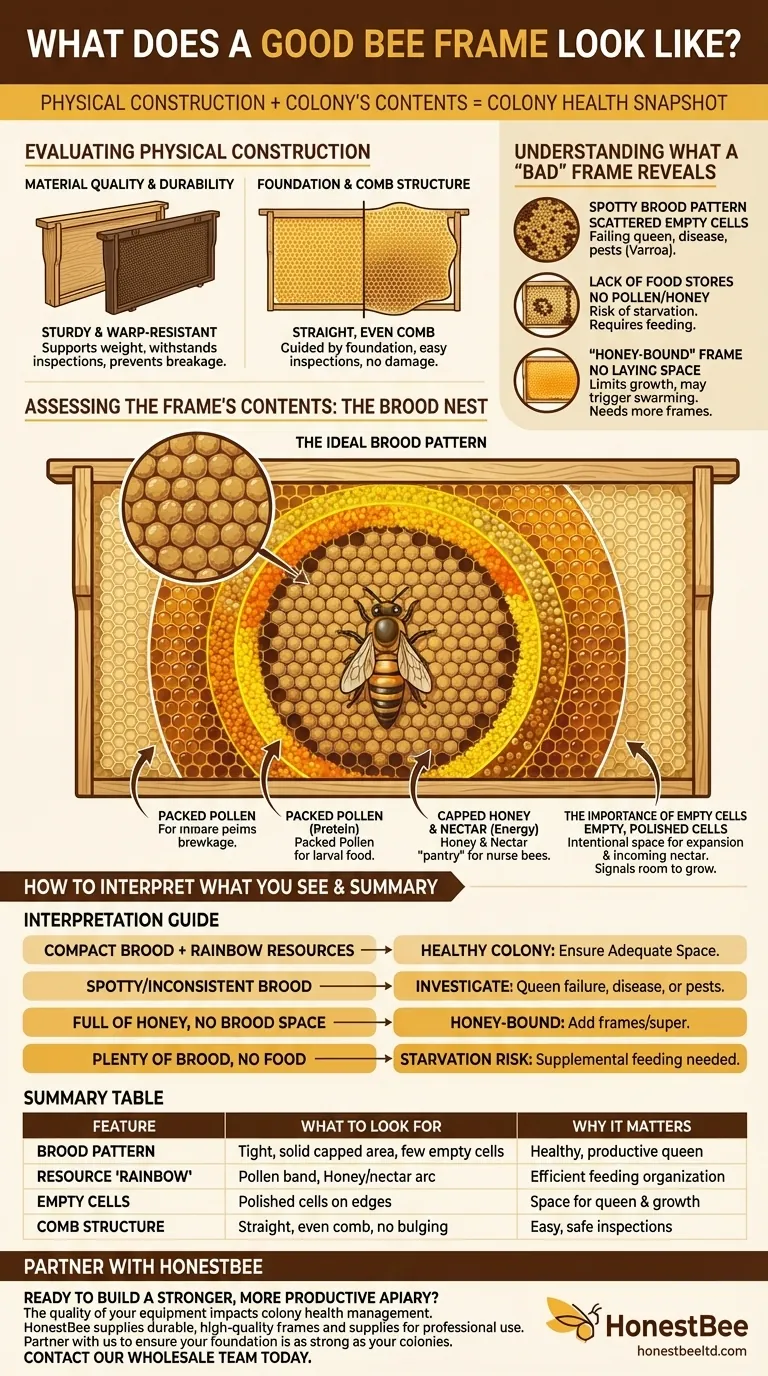
Related Products
- Plastic Bee Frame Beekeeping Hive Frames for Wholesale
- 7 x Auto Bee Flow Hive Frames Plastic Beekeeping Hive Box Supplies
- Assembled Wooden Bee Frames with Beeswax Foundation Ready to Use by HONESTBEE
- Assembled Wooden Bee Frames with Plastic Foundation for Durability and Convenience by HONESTBEE
- Heavy-Duty Stainless Steel Clip-On Frame Perch
People Also Ask
- Are plastic bee hive frames good? A Guide to Modern Durability vs. Natural Appeal
- What is the role of oxalic acid in plants? A Key to Plant Defense and Internal Regulation
- Can you boil plastic bee frames? Avoid This Costly Mistake and Protect Your Hive
- Are plastic frames good? Boost Apiary Efficiency with Durable, Pest-Resistant Frames
- What are the main types of frames available for beehives? Wood vs. Plastic for Your Apiary


